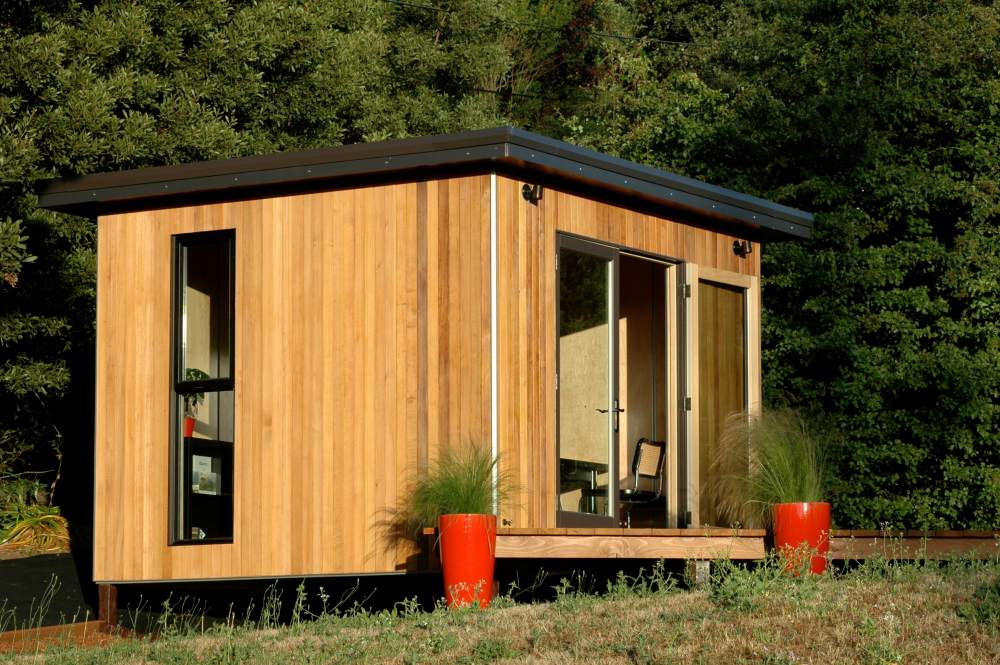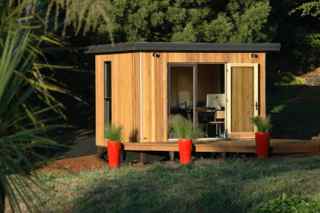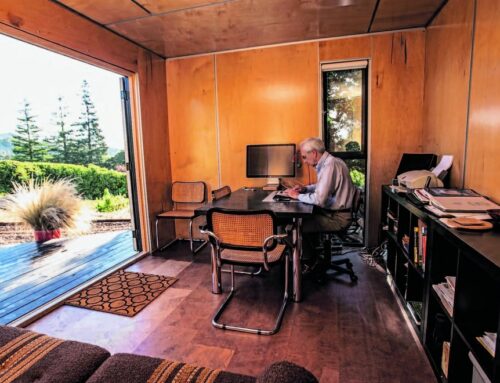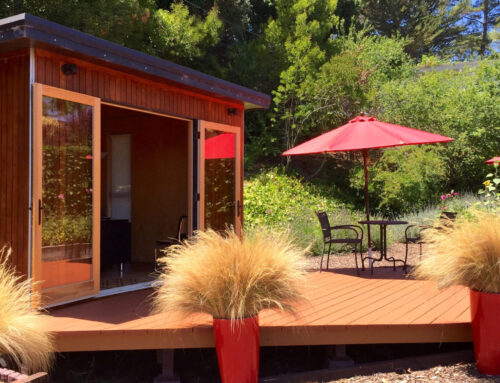YardPods are custom-designed to meet the needs of each owner. One of the factors considered is the microclimate in which it is to be placed and how it is to be used. We prefer to design each YardPod specifically for its location and orientation rather than having standard designs which may or may not work in different microclimates. YardPods has a staff architect who puts his ten years of architectural education and many more years of practical experience to good use for every customer!
 YardPods can be designed to be off the grid, using solar and wind power as available with battery back-up. This will be discussed in a future article. But for most owners adding a YardPod to their existing homes, connecting to the house electrical system is the easiest and lowest initial cost. However, intelligent design can minimize energy use and provide comfortable conditions without a lot of heating and cooling.
YardPods can be designed to be off the grid, using solar and wind power as available with battery back-up. This will be discussed in a future article. But for most owners adding a YardPod to their existing homes, connecting to the house electrical system is the easiest and lowest initial cost. However, intelligent design can minimize energy use and provide comfortable conditions without a lot of heating and cooling.
Because YardPods are prefabricated for speed of assembly, they are lightweight and do not have a lot of thermal mass. Therefore, we have to adapt the design for optimum comfort using the following tools:
Orientation & Position: The location of a YardPod within a site usually is the largest factor in determining thermal performance. Sunlight exposure and shade from existing buildings or trees can enhance or detract depending on climate.
Roof Finish: We recommend using a cool roof membrane, which reflects the sun.
Roof Shape: The standard (almost) flat roof is our favorite, but where natural ventilation is to be used, a single slope with operable high-level windows is often better. In areas of snow, a sloping roof is recommended.
Roof Overhang: The overhang can be optimized to shade doors and windows from the hottest summer sun, while allowing warming sun in winter to penetrate into the YardPod.
Construction: When using a light gauge steel frame, we can add a layer of foam insulation to the outside surface to eliminate thermal bridging. SIPs panels do not have this problem. Wall and roof thickness can be increased to increase insulation.
Floor: Using a concrete slab as a floor makes a huge difference to thermal mass and creates a lag in temperature fluctuation. The floor can be designed to keep the YardPod warm on summer evenings.
Windows and Doors: Sized and positioned for best performance, windows can be used to heat a concrete slab. Where differences in internal and external temperature is a problem. We can position windows to provide cross-ventilation. And, we can specify windows without thermal bridging, such as wood or vinyl, or aluminum with a thermal break. Different glass is available to reflect sunlight and to increase thermal performance. We only recommend dual-pane windows, but triple-panes are available for extreme climates.

In a mild climate such as Marin, California, most people need a moderate amount of heat in the winter which can easily be provided through a stand-alone electric space heater which heats the air quickly and which can be switched off when not needed. A thermostat-controlled fan model is preferable so that it does not run all of the time.
Many areas can be comfortable without air conditioning in the summer; other areas may require air conditioning. The decision about whether or not to install air conditioning is best made at the design stage. There are three types of air conditioner:
1. Stand-alone which is like a space heater, but requires an external vent through a window. This is the lowest cost and fastest to install, but requires a window which can be left open a few inches, then a plastic plate is installed to fill the gap and support the vent.
2. A Window-mounted version that is ugly and takes away from the light.
3. A wall-mounted version that fits into a rectangular hole in the wall. YardPods can be manufactured to include such an opening.
The capacity of the air conditioner will depend on the location, but because a YardPod is well insulated and has a small internal volume, the smallest sizes are usually sufficient. For example, an air conditioner for a YardPod in San Rafael would need to be just 5,200 BTU.
Wall-mounted air conditioners are available at most hardware stores such as Home depot and many electronics stores such as Best Buy. Note that the electrical circuit must be appropriate for the air conditioning load.
Whatever your microclimate and location, we can design a YardPod to minimize energy use and maximize your comfort.



Leave A Comment
You must be logged in to post a comment.